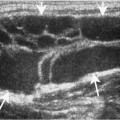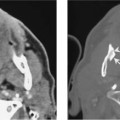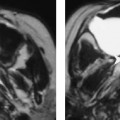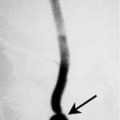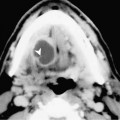Chapter 52 Nasopharyngeal carcinoma (NPC) is a unique malignancy. The etiology is based on the outcome of the interaction among genetic susceptibility environmental factors including chemical carcinogens and the Epstein-Barr virus (EBV). The high antibody titers to EBV antigens are useful diagnostic markers. The highest incidence rates are found in southern China, and this pattern persists in those who have emigrated. The highest incidence rates are found in Hong Kong followed by Singapore and the United States (Chinese Americans). The incidence rates in whites are very low but a relatively higher incidence is found in African Americans. NPC affects children, adolescents, and the middle-aged. This malignancy is more common in males, with a male to female ratio of 2.5:1. The stages of NPC have been classified by the American Joint Committee on Cancer (AJCC) (Table 52–1). Enlargement of the upper cervical nodes is the most common presenting complaint followed by nasal symptoms such as blood-stained nasal discharge or frank epistaxis. The patients may also have unilateral hearing loss due to a tumor obstructing the eustachian tube leading to serous otitis media (Fig 52–1). Tinnitus occurs in approximately one third of patients. Endoscopically, a mass is easily identified usually originating in the fossa of Rosenmüller. The World Health Organization (WHO) classification recognizes two major types of NPC; namely, squamous cell carcinoma (SCCA) and nonkeratinizing carcinoma, with the latter subdivided into differentiated and undifferentiated subtypes. Undifferentiated carcinoma has in the past been alluded to as lymphoepithelioma (Schmincke’s tumor) because of the intimate admixture of undifferentiated carcinoma and the nonmalignant lymphoid cells on light microscopy. Typical well-differentiated SCCA in the nasopharynx is rare, with reported frequencies of < 2%. There is a strong association between EBV and undifferentiated carcinoma. Differentiated nonkeratinizing carcinoma also exhibits significant EBV associations, but they are not as strong and consistent as those of undifferentiated carcinoma. NPC–EBV associations are also present but are relatively weak in well-differentiated SCCA.
Nasopharyngeal Carcinoma
Epidemiology
Clinical Findings
Pathology
